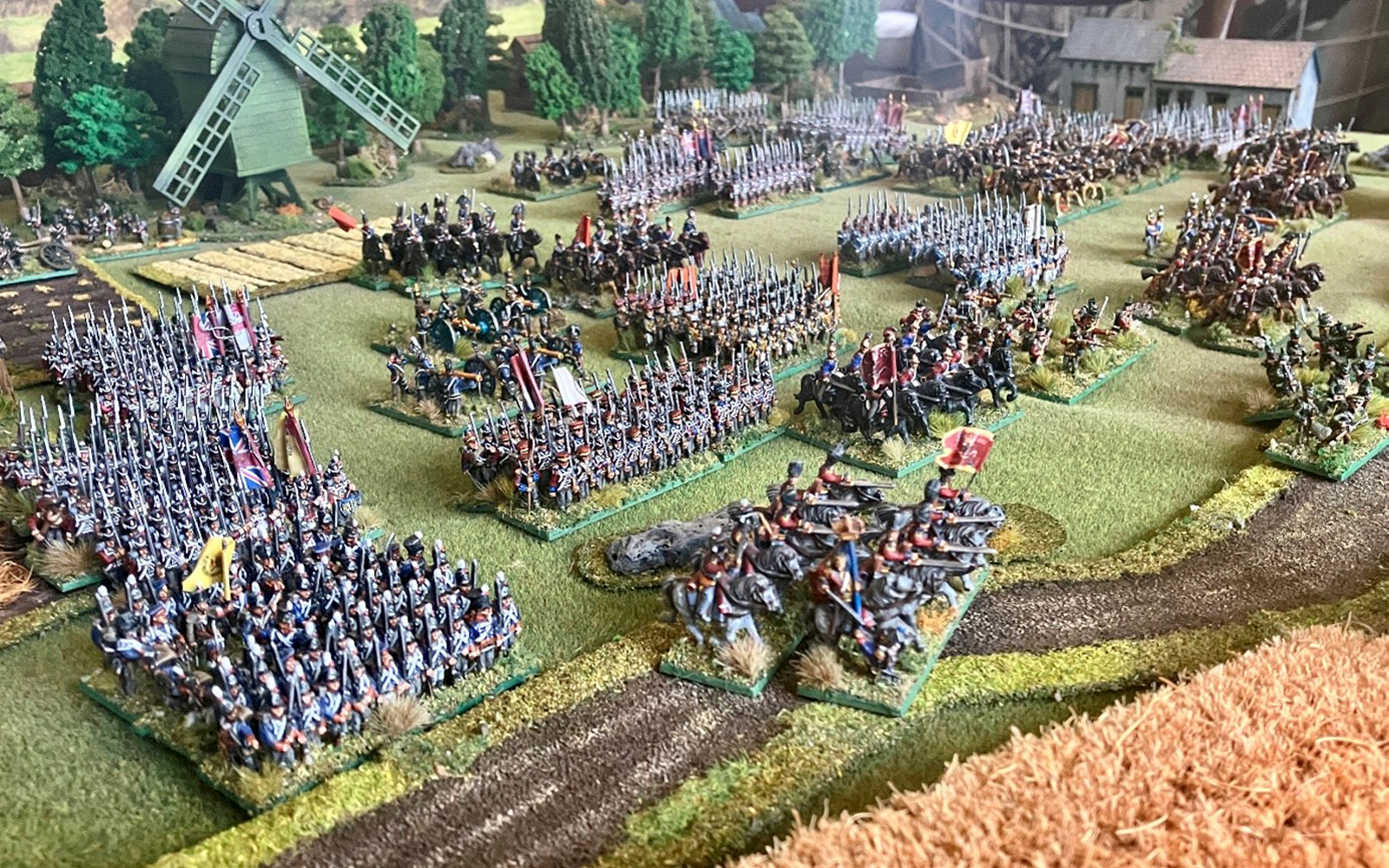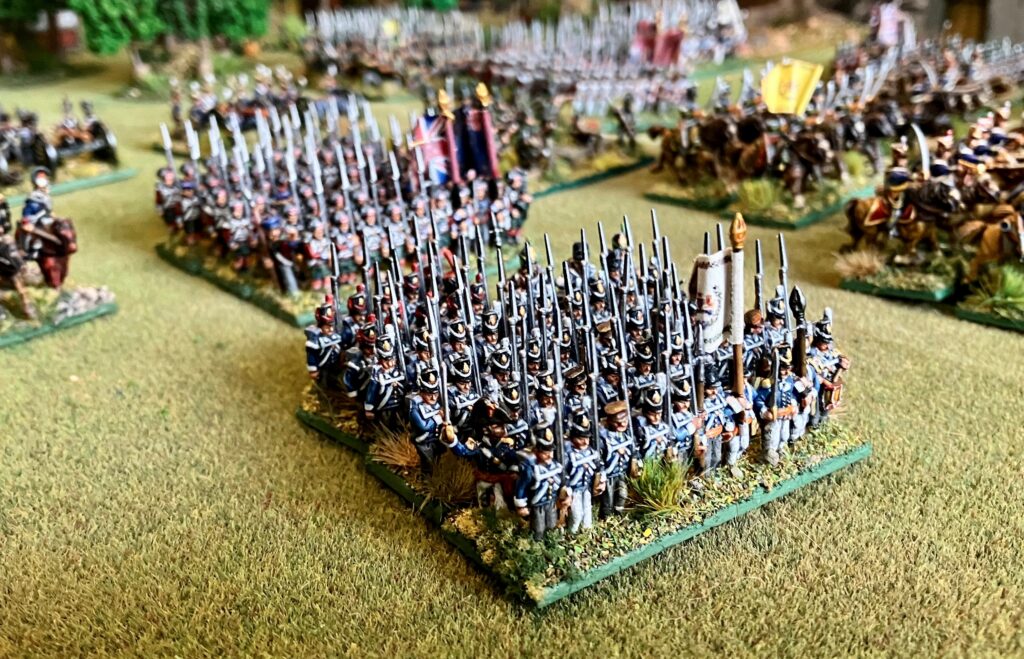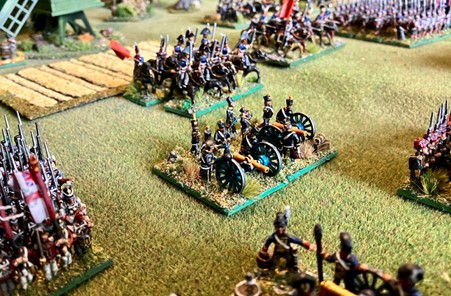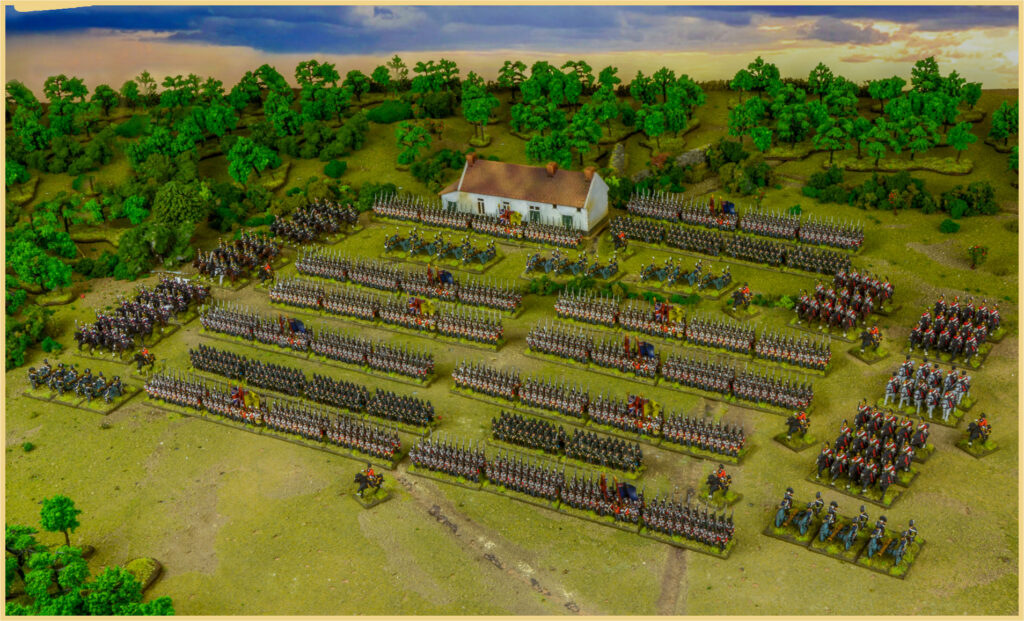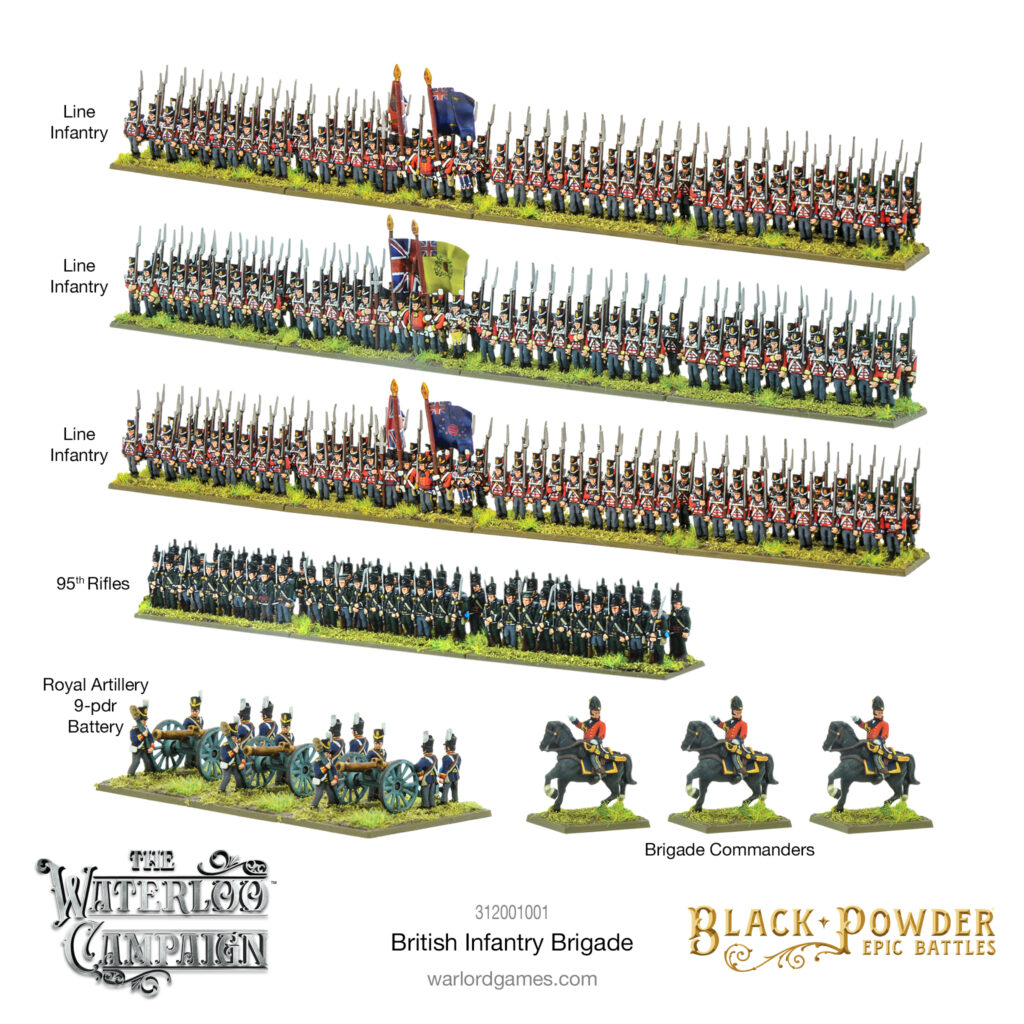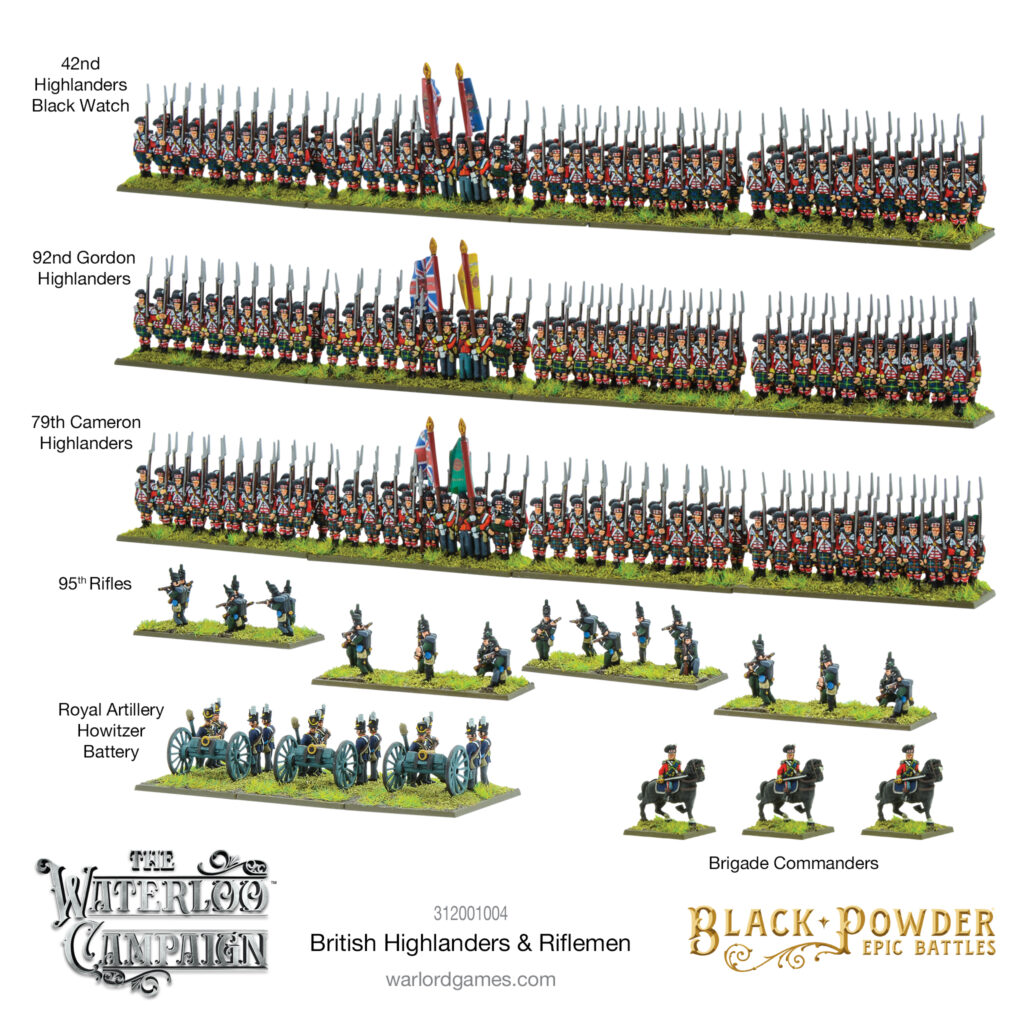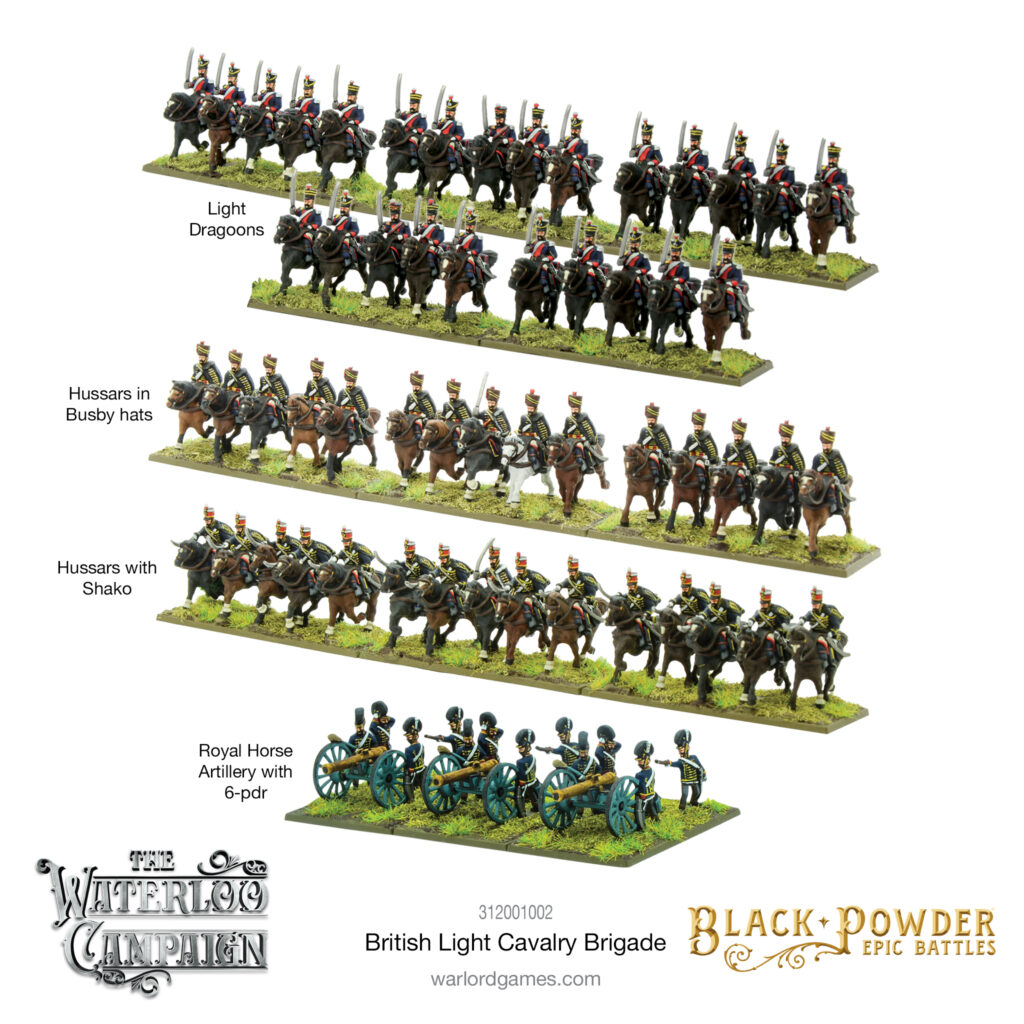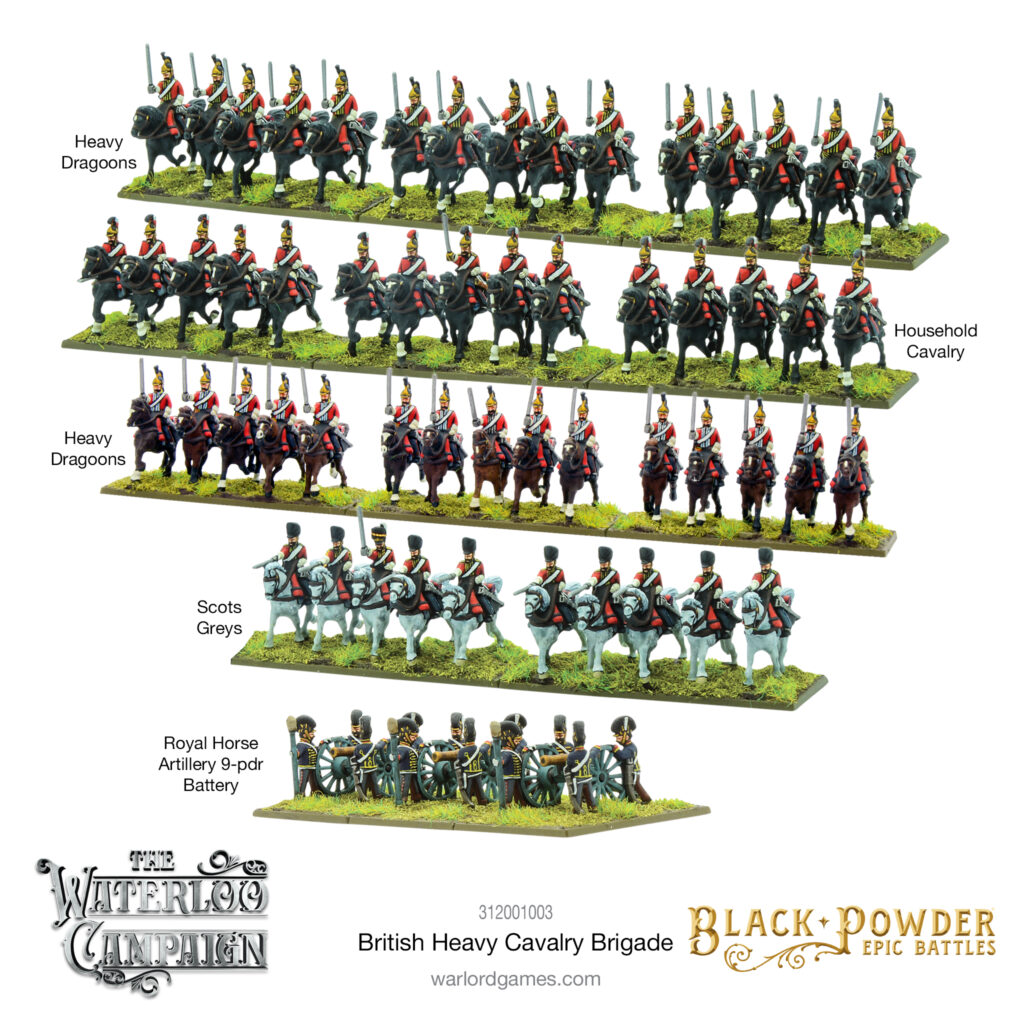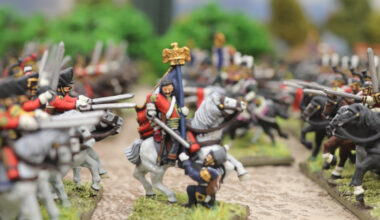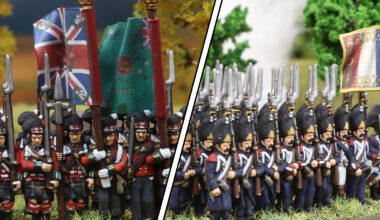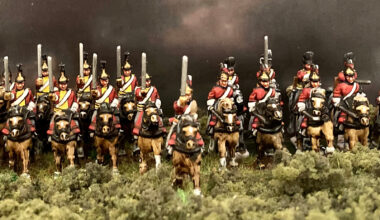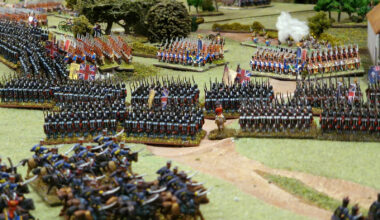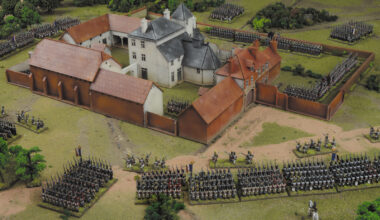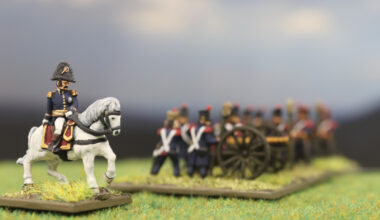Rhys Pogson Hughes Emanuel is a prolific and extremely active member of the Black Powder Epic Battles community. Some of you may recognise him from the lively Epic Battles Facebook movement where he has been supporting the game across the Epic Warlords, Warlords Epic Battles ACW, Epic Battles Warlord Games, Warlord Games Epic Battles Napoleonic and Warlord Games Black Powder Epic Battles groups. Be sure to check out these groups and join the conversation.
Rhys: Earlier in the year, I provided an update on my French collection to date, so it seems only right that my enemies of Napoleon receive similar attention, though Pike & Shotte Epic Battles has recently been diverting my attention from the Napoleonic Wars!
Thus far I have completed 32 units of my planned 43 Allied units to face the French juggernaut, so I am getting close (but that doesn’t include the 28 Prussian units I haven’t started yet!). As ever, my aim was to not only use the Epic Battles range to muster a huge force for the table, but to try and represent as diverse a range of historical units from the theatre as possible. For the Allies, this was a lot more straightforward than it had been for the French.
To begin, most of the British Guard, line and the KGL needed no additional work other than choosing appropriate facing colours and flags to demonstrate the wide variety of units involved – a simple painting solution.
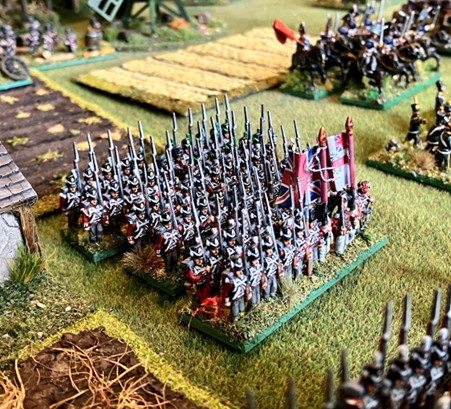
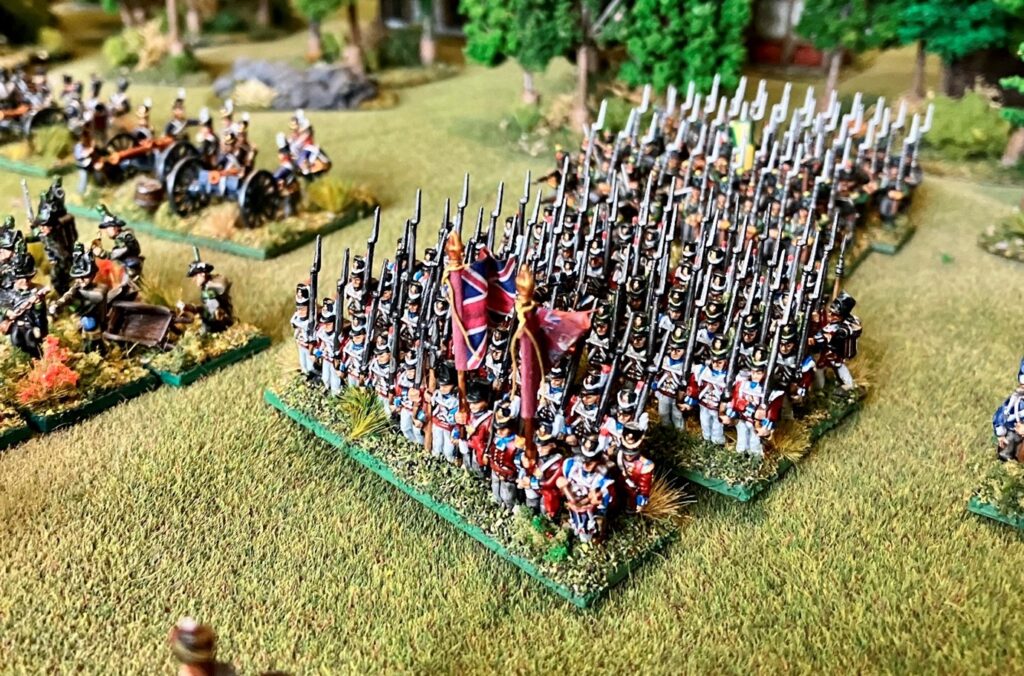
Similarly for the Hanoverians, a few head-swaps (mostly from the Prussian Landwehr sprues) gives you a suitably North German look.
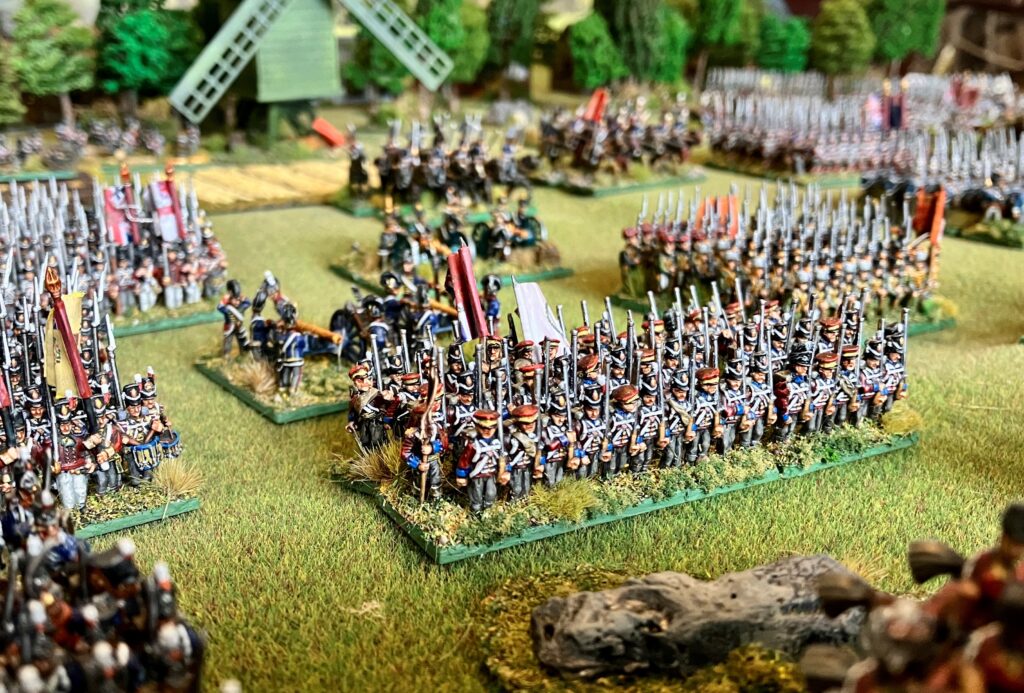
For the Bremen Hanoverians, I used the Rifles in line.
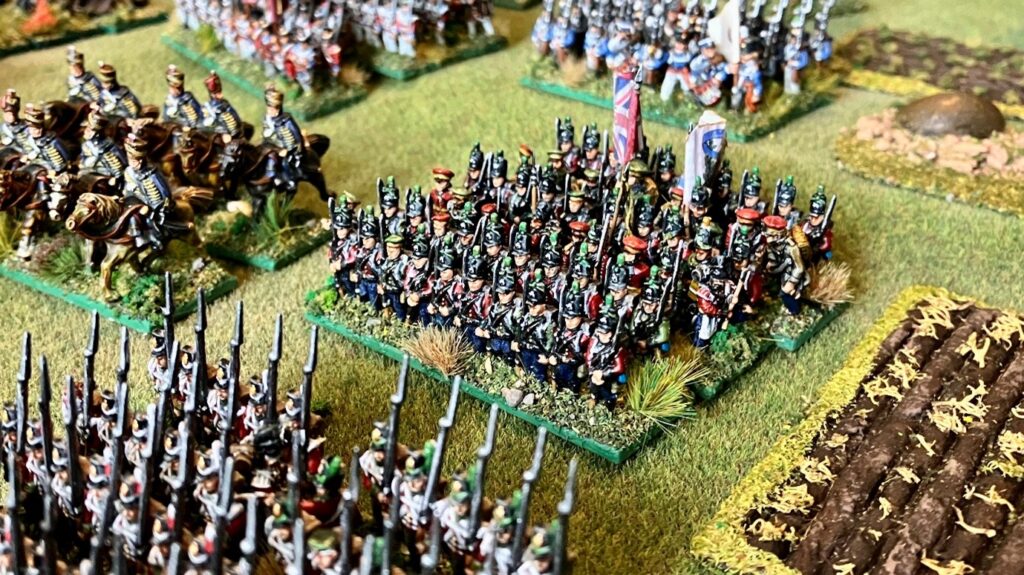
Of course, the Scottish Sprue stands out without any real tinkering – once you have dealt with the tartan (for this I ‘cheated’ by using 0.05mm coloured pens over a base paint coat for ease).
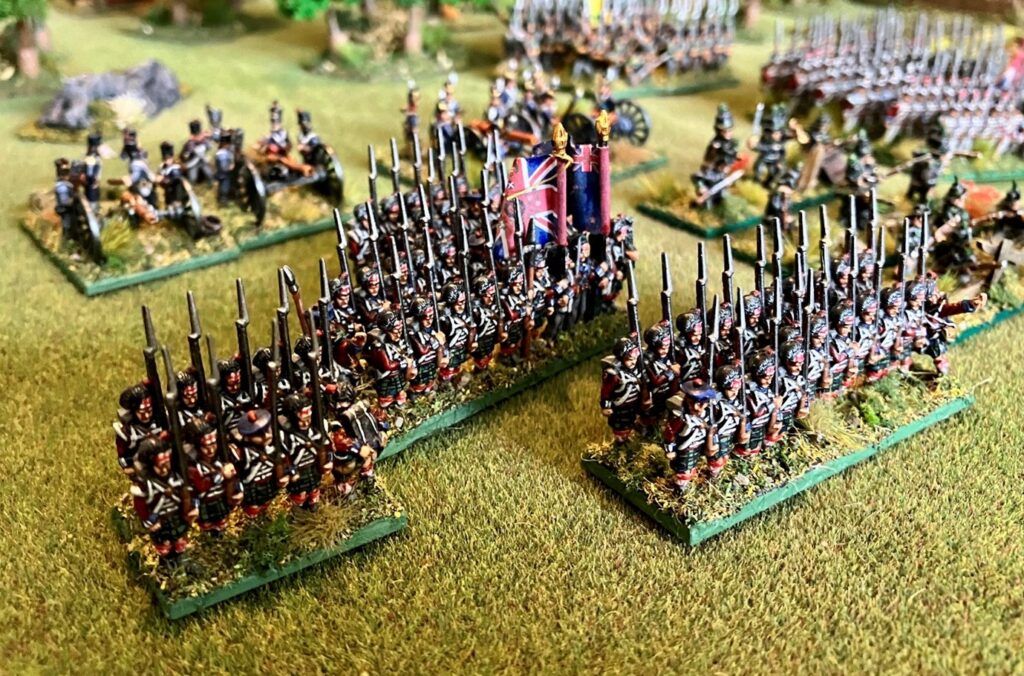
Units such as the 95th Rifles are easily represented straight off the sprue, but other light Infantry units can be represented by the same figures with an appropriate paint scheme.
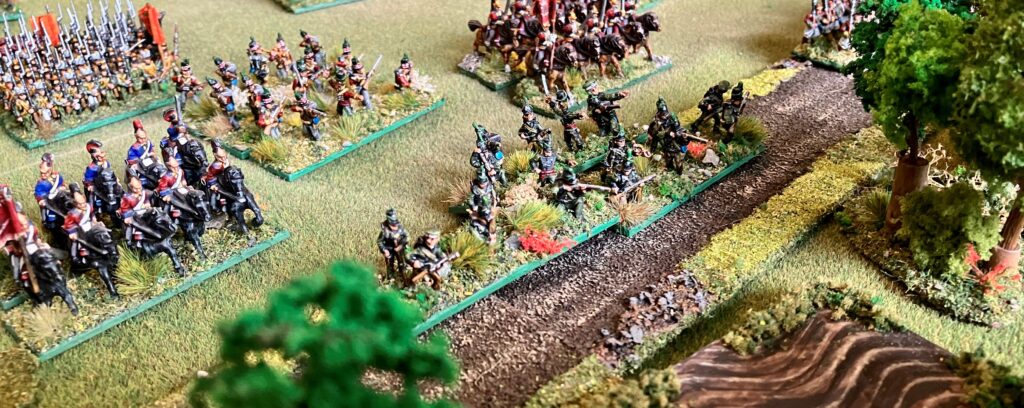
For the Dutch Line and Light, I simply used the French sprue. But made an effort to colour the kit, straps, and greatcoats differently to the French where historically appropriate. Also pictured is Dutch artillery – a simple painting solution using the French Line artillery.
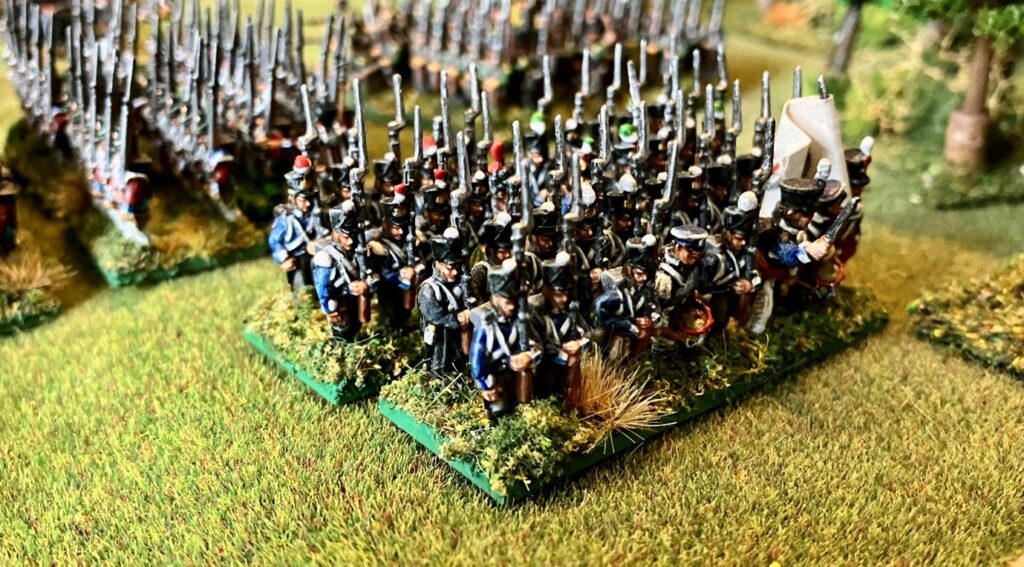
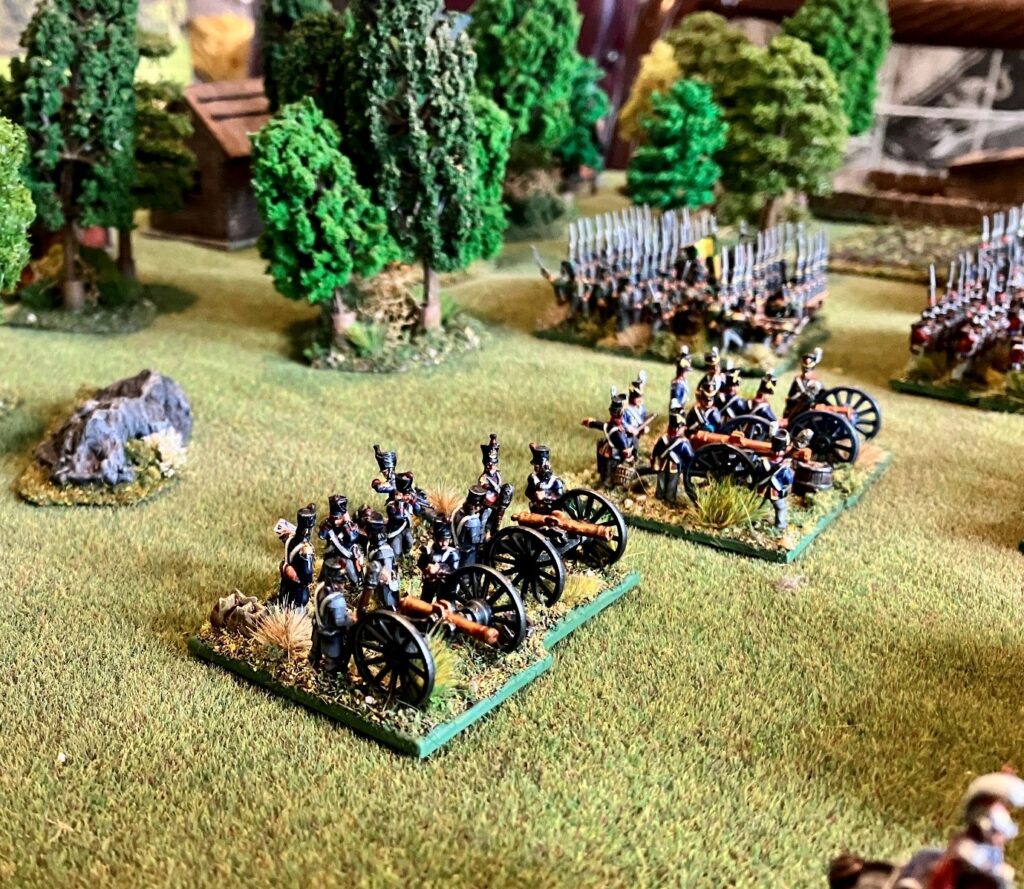
Much the same for the Nassau-Usingen regiment – albeit I added some of the Colback heads from the Guard Chasseurs à Cheval for the Grenadiers. This was before Warlord released spare heads for them – which would have saved some of my French Cavalry!
For the Belgian Line, I simply used the British Line; they work really well.
And for the Dutch Militia, I again used the British Rifles in line with an appropriate paint scheme.
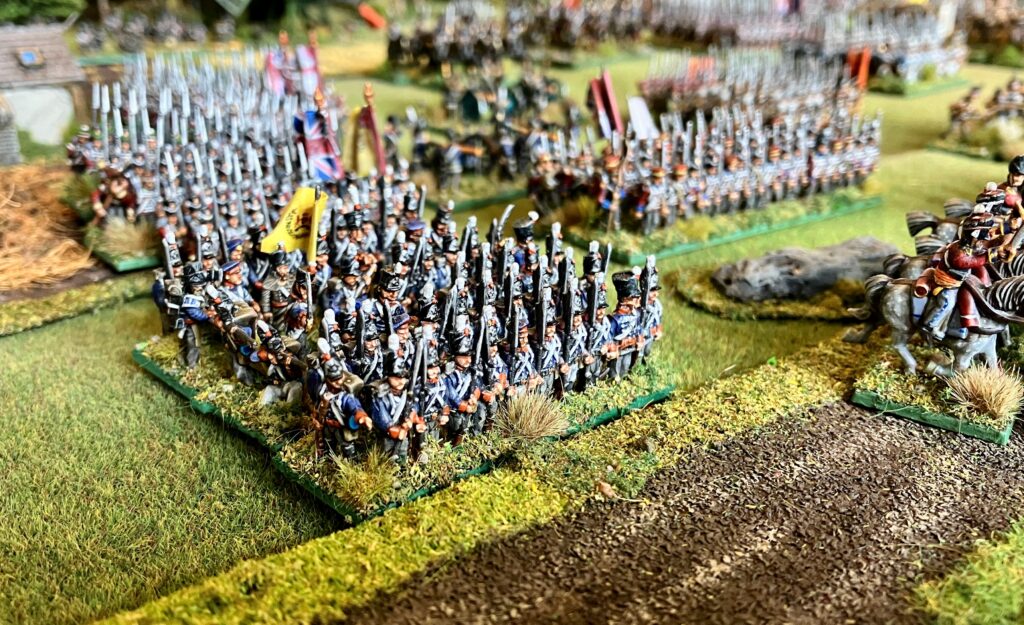
I stepped back into 1814 for the next unit – Greek light infantry in British service, though a similar technique could be used for any of the Balkan troops of the period. For these, I used Zouaves from the American Civil War range, with officers’ heads from Heavy Dragoons, and a few British RHA Tarletons for variation.
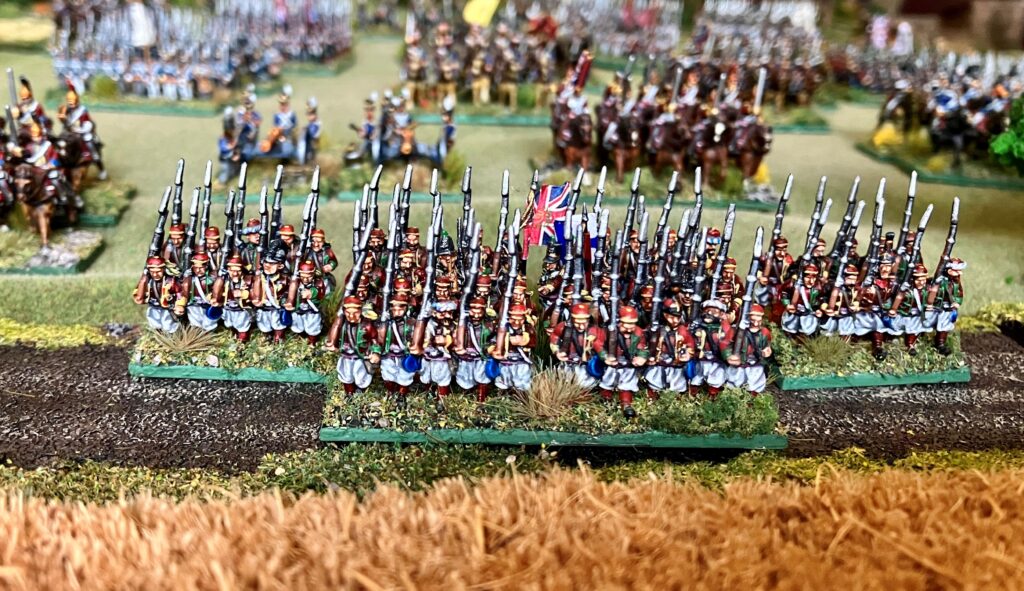
For the Brunswick Avant-Garde, French and British skirmishers were already all but perfect, I used some wide-brimmed hats converted from the ACW Iron Brigade supplemented by some 3rd party heads for variety.
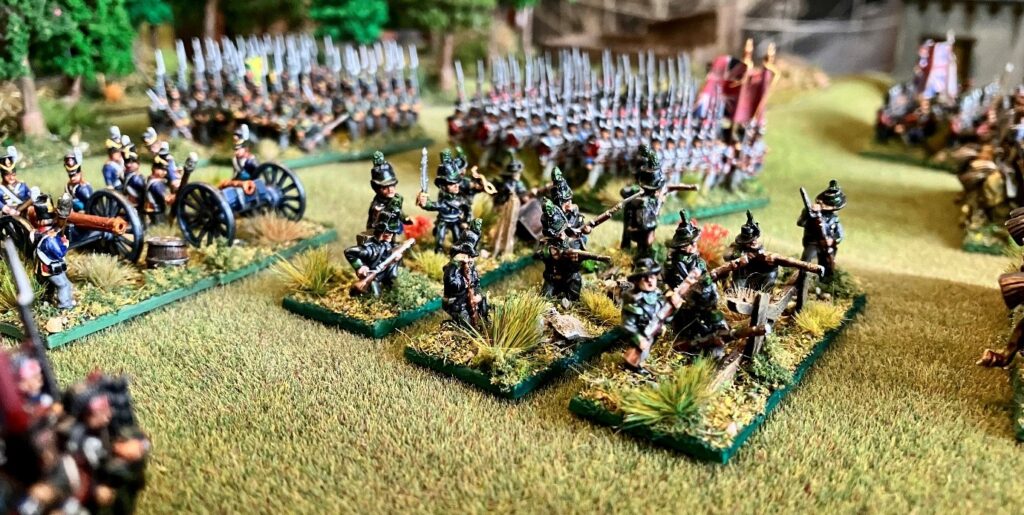
For the cavalry, again the sprues have plenty of variation without the need for much in the way of tinkering, including Heavy Dragoons, Household cavalry, Light dragoons, and Hussars.
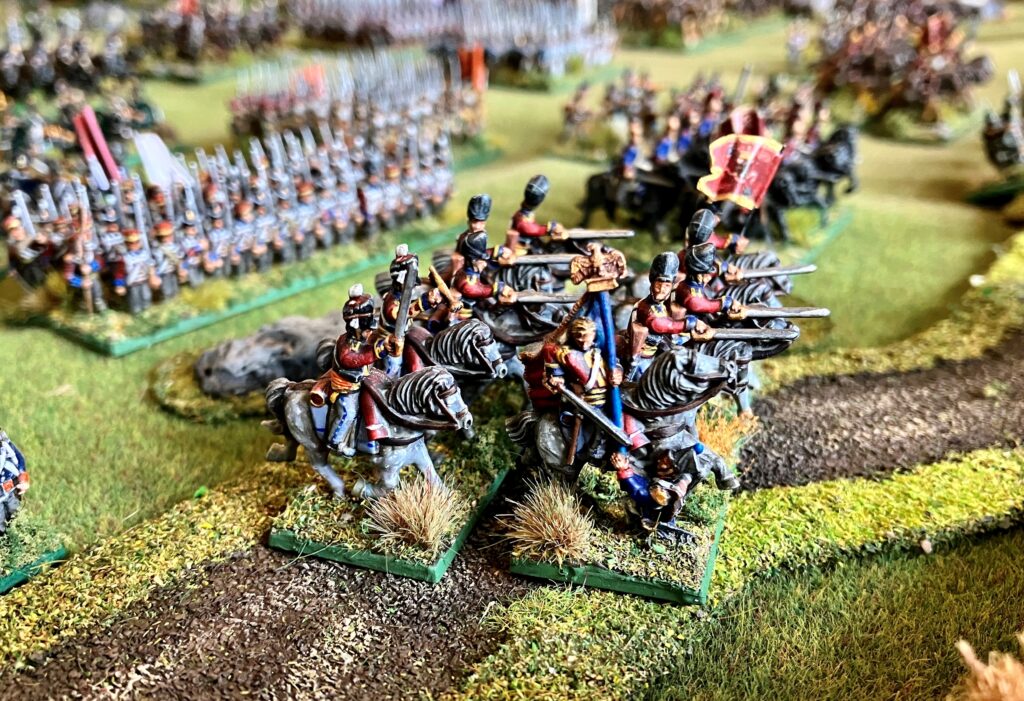
The cavalry make great base sculpts for wider Allied representation as well:
Belgian Carabiners from either the French Carabiners or at a push British Household Cavalry, with green stuff blanket rolls.
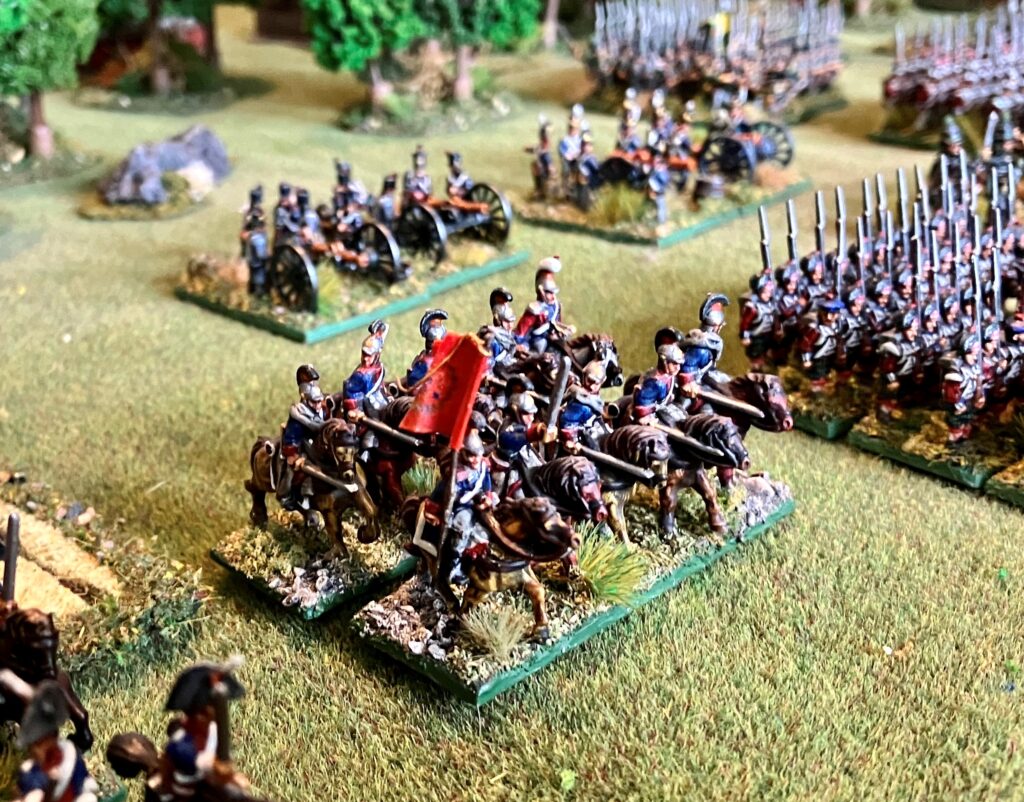
Dutch Carabiners with the same green stuff blanket rolls and French officer heads swapped in (again this was before the new spare heads sprues were available!). These would ideally have been based on spare French cavalry bodies, rather than the British ones I used – that would have been slightly more accurate!
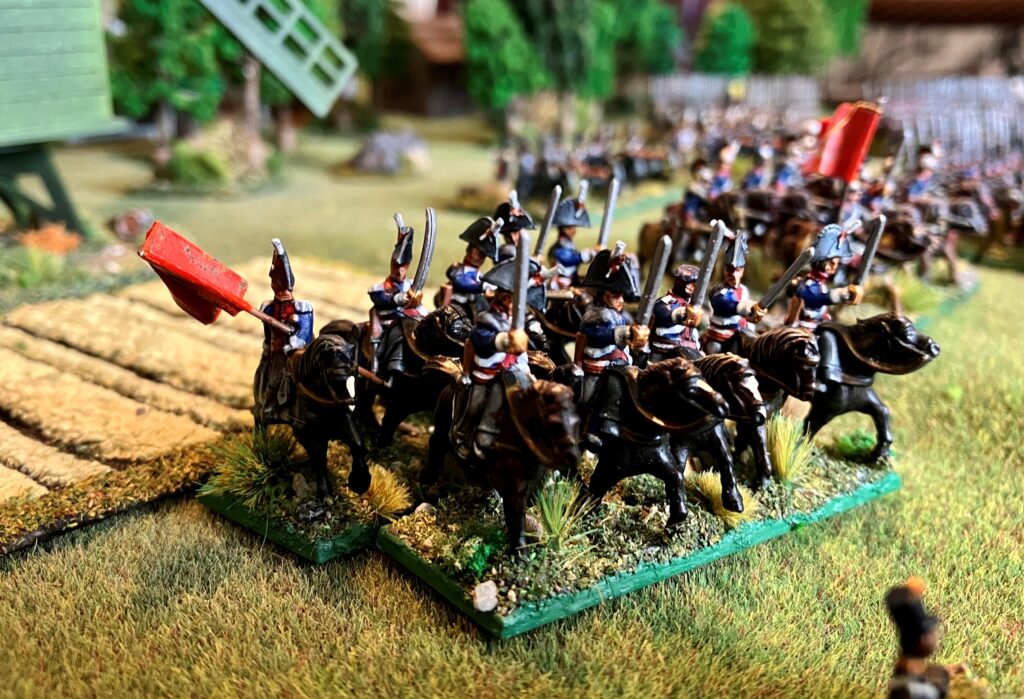
Here is one of my favourites- British Yeomanry! And before you say it, one unit did actually receive battle honours during the Napoleonic wars – The Pembroke Yeomanry. made these with spare British cavalry, with their heads replaced with Tarletons from the RHA figures.
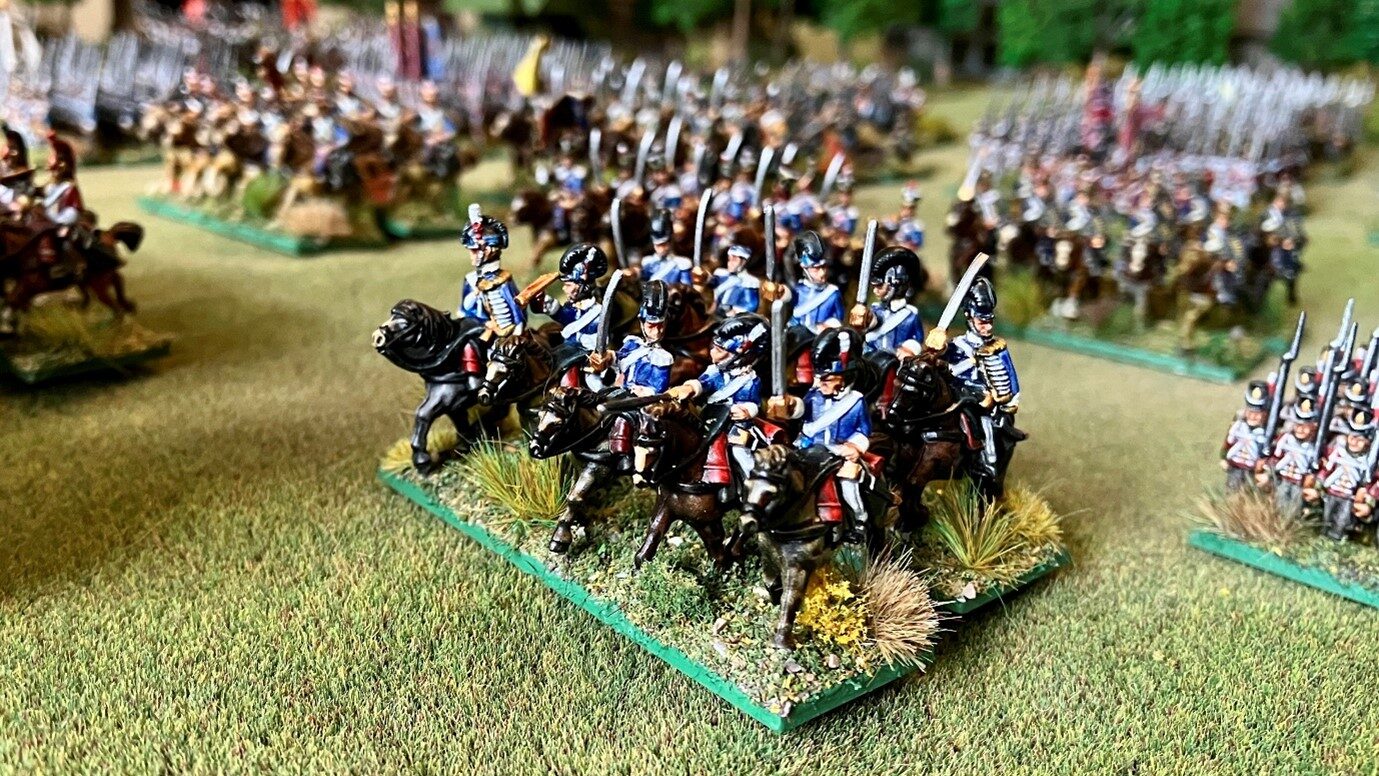
I now routinely (as you hopefully noticed) not only add a bugler and standard to my cavalry regiments, but snip, rotate and re-attach about 40% of my cavalry heads to give my units more of a dioramic impact.
I do the same with my artillery, and also re-position some of the figures, to help generate some diversity without any real effort. That is in addition to my signature trick of adding an inanimate object to the base (beyond the artillery piece itself).
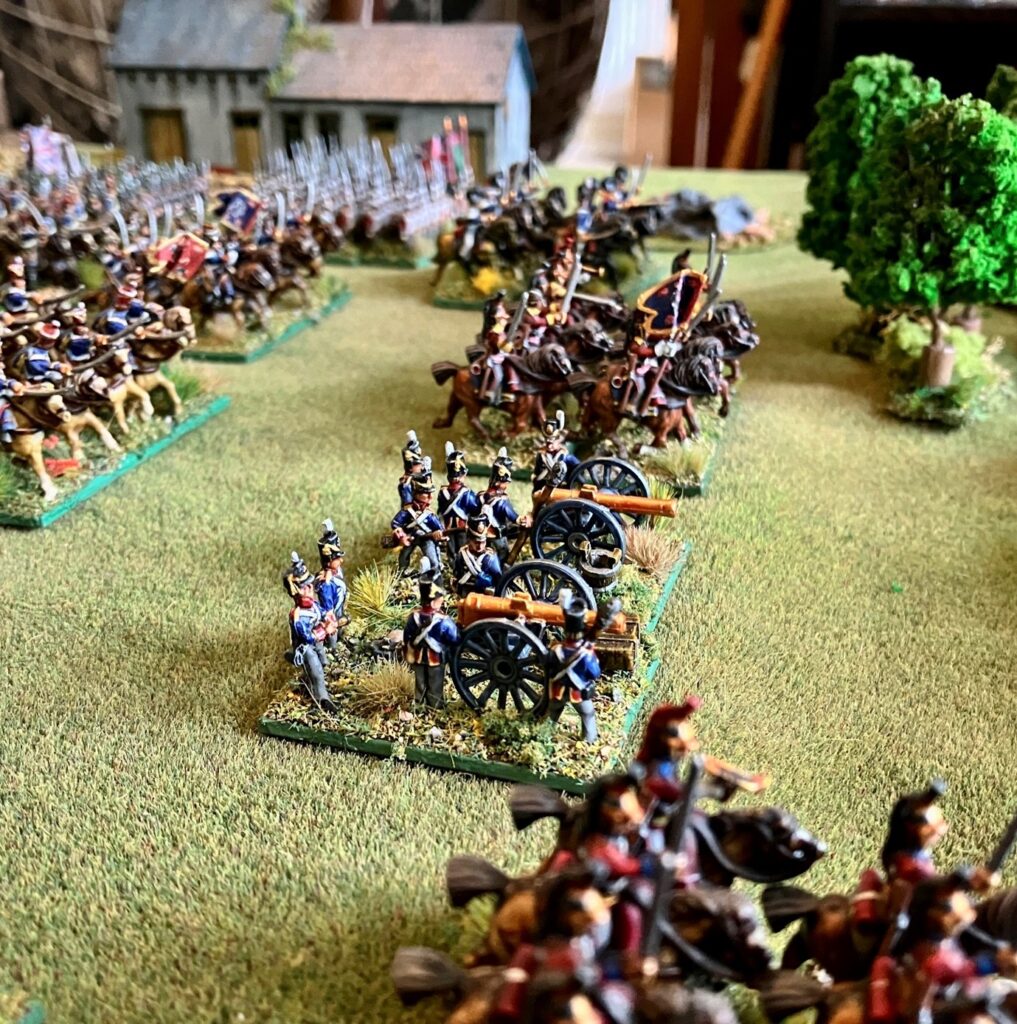
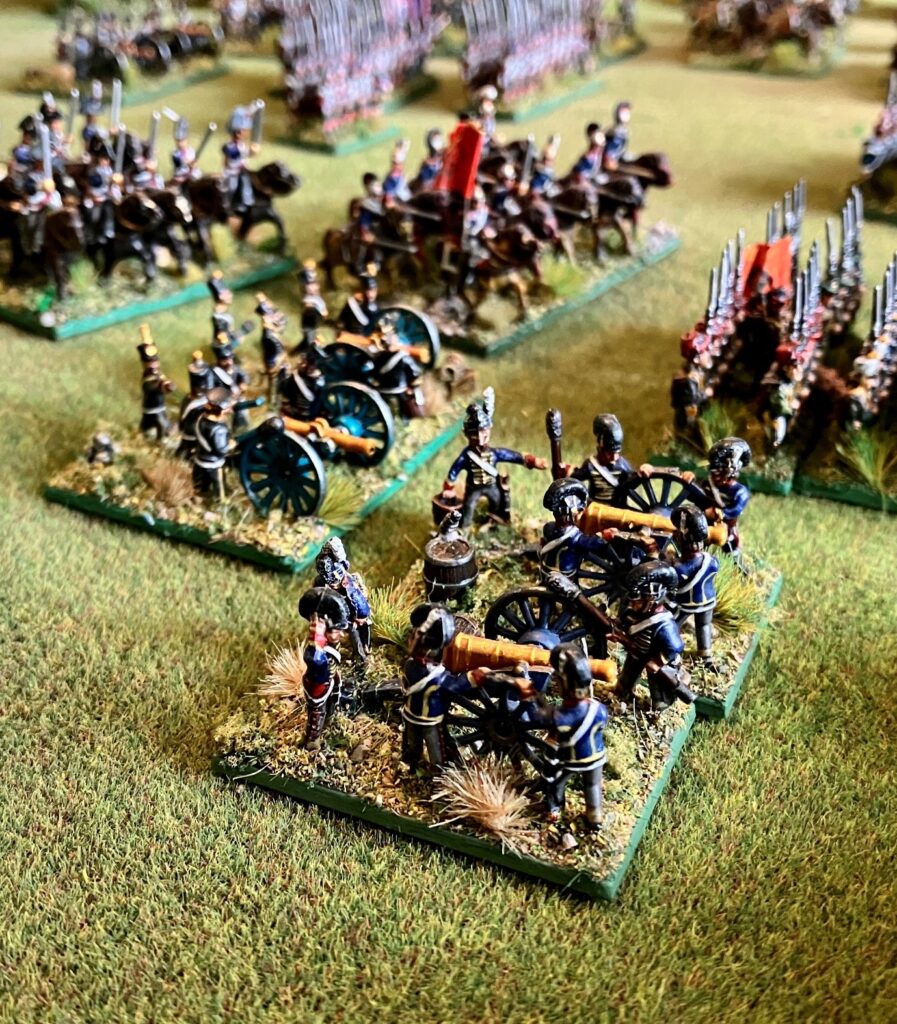
The RHA figures, with some French Line heads added, make for very good Brunswick artillery too.
The variation available across the sprues for the Allies is very good for representing a wide variety of troops and nationalities for the Epic Battles scale – exactly what the range was designed for. All you need is a little imagination with your paint schemes and the odd bit of conversion work. I am excited about any possible future Napoleonic releases… but hopefully not before I get a chance to get through all my Prussians! I hope that your own Epic Battles Napoleonic collections are still steadily growing and that they are starting to look Epic!
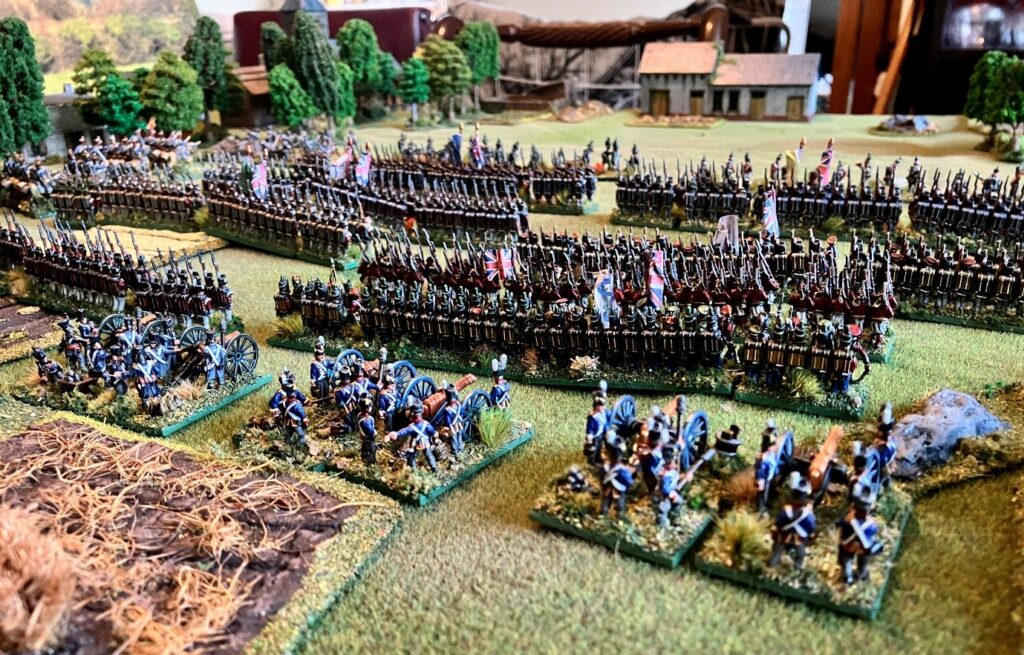
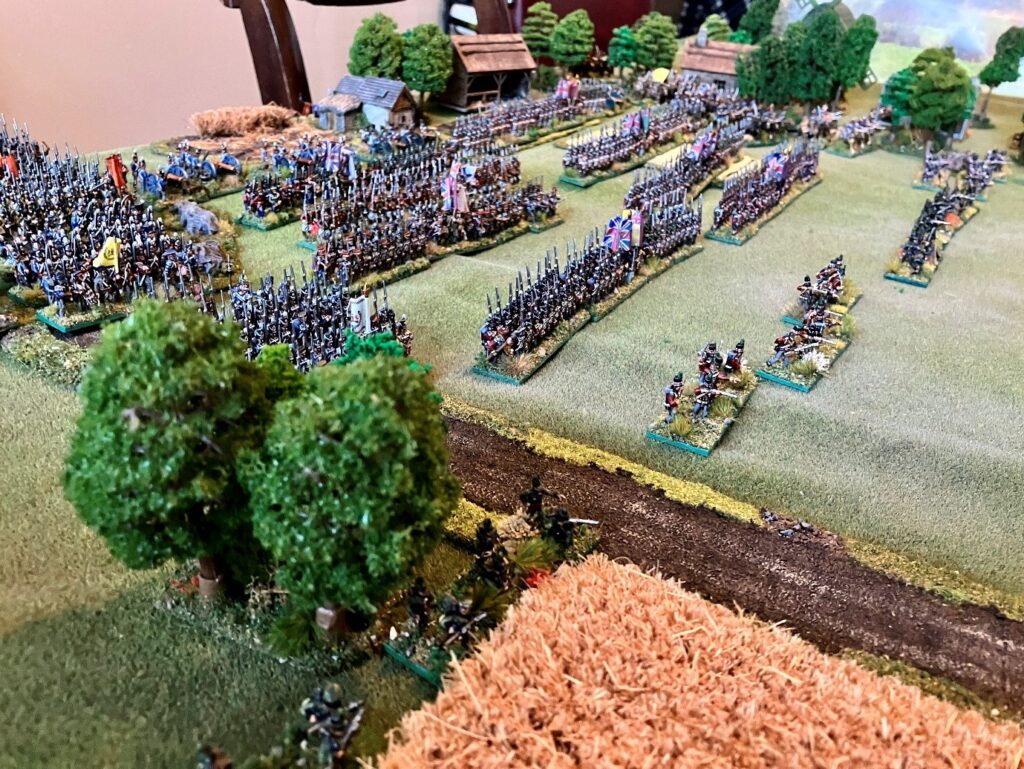
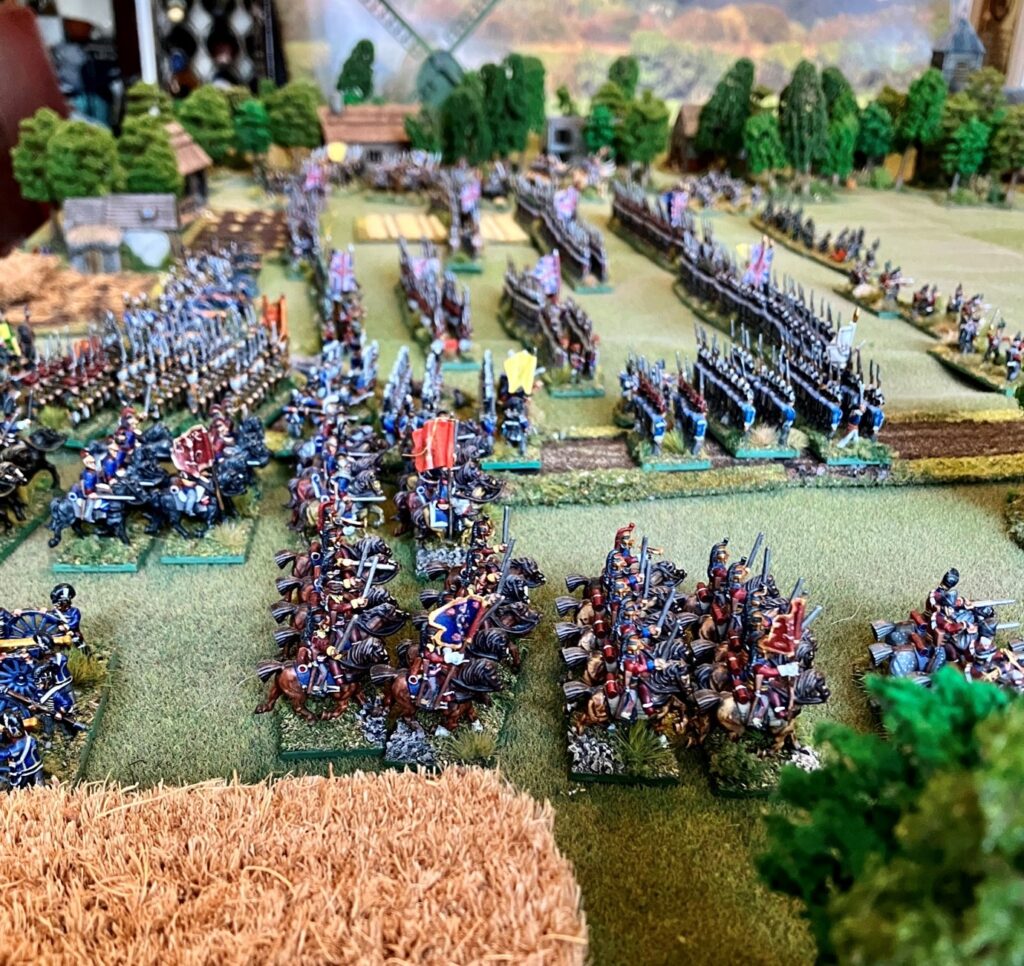
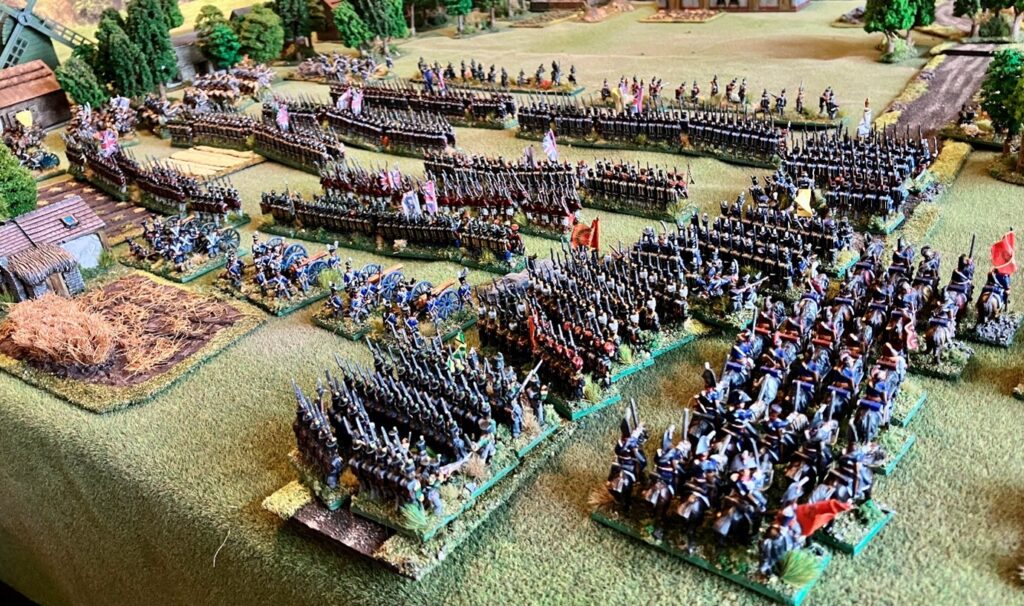
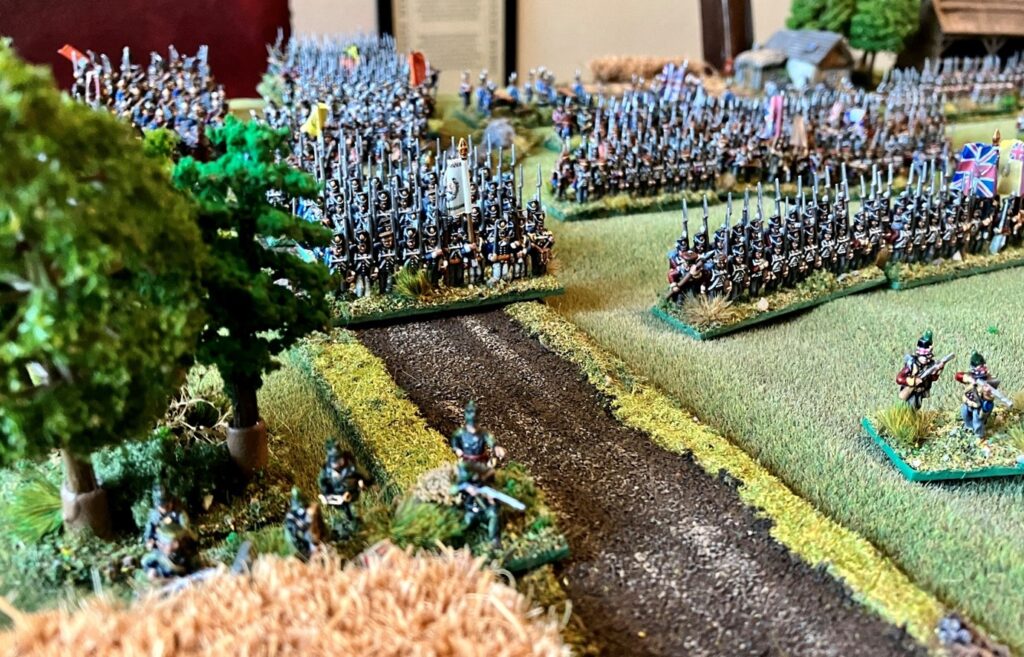
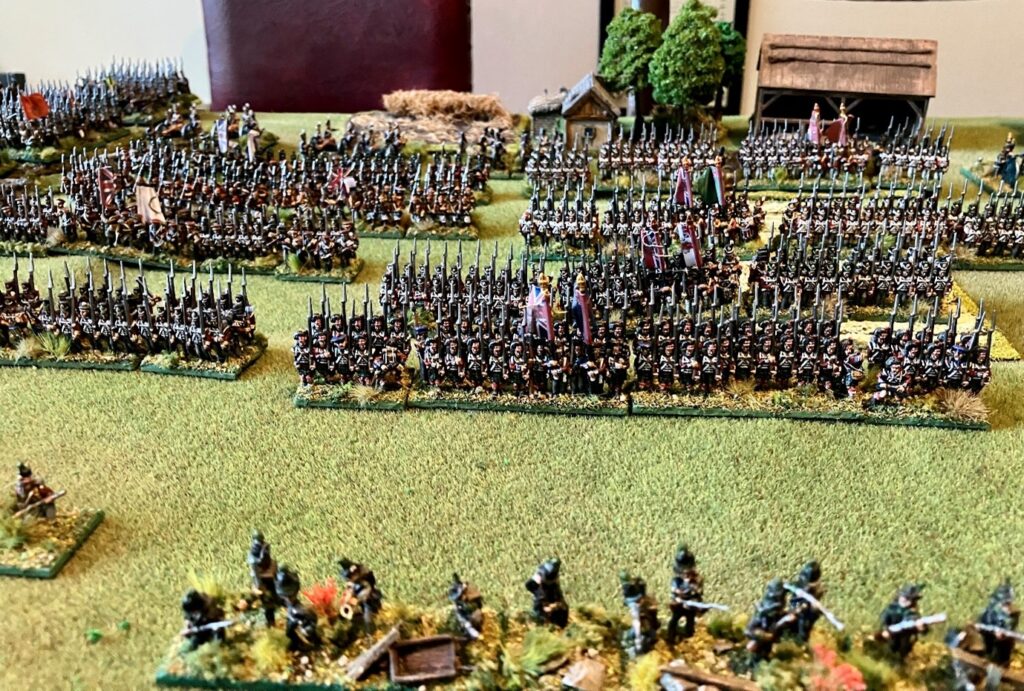
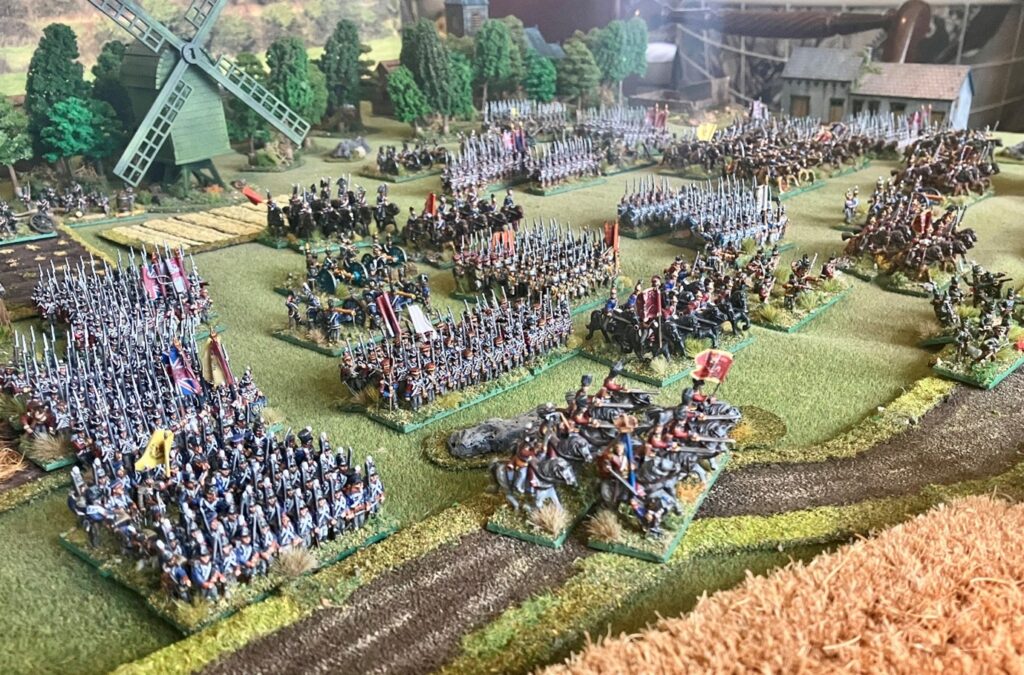
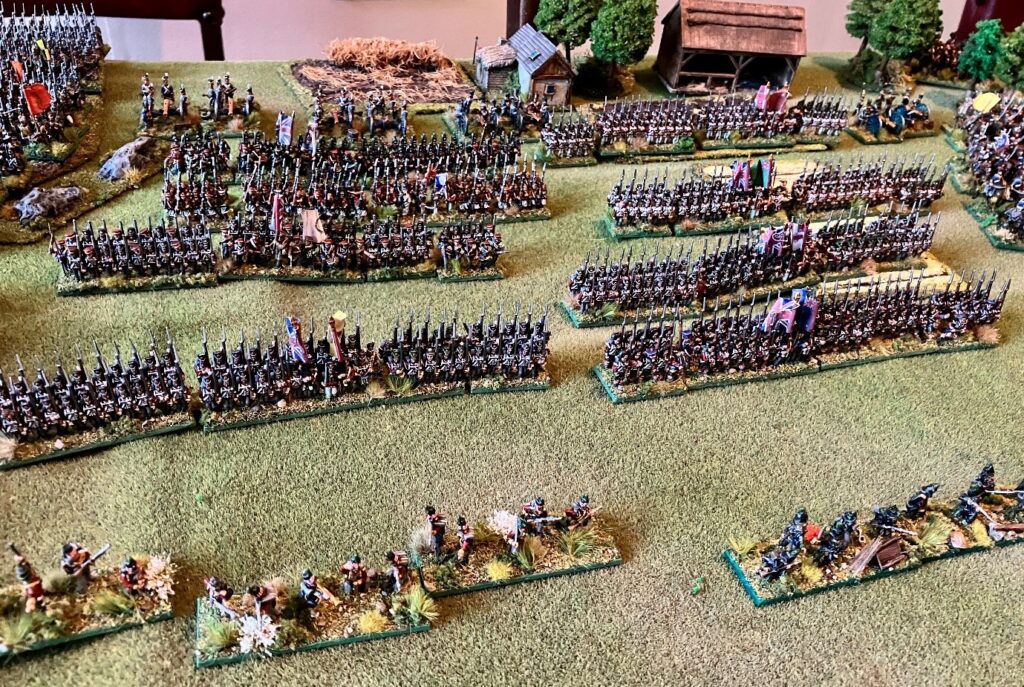
Collecting British in Black Powder Epic Battles: Waterloo
Wellington’s British Army starter set provides a solid core of a British army serving in the Hundred Days campaign – 10 units of line infantry, 3 units of 95th Rifles, units of each type of heavy cavalry (Heavy Dragoons, Scots Greys and Household Cavalry) and light cavalry (Hussars and Light Dragoons), ably supported by 16 pieces of artillery and brigade commanders. Also included is an MDF building of La Belle Alliance Inn and a bespoke A5 softback rulebook with Napoleonic-specific content.
Expand your collection with additional brigades of infantry, light cavalry and heavy cavalry, or add in the Highlanders and the (more or less essential!) skirmishing 95th Rifles.
